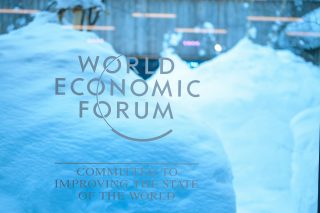We’ve all seen the headlines around COP28, but what was going on behind the scenes? It was a troubling trend of misinformation, mistrust, and polarization.
2.2 million posts on X were published during the conference – the same as COP27 which is surprising given this year’s controversies, but this could also be indicative of X’s declining role in public discourse – with 8,584 X profiles mentioning the official #COP28UAE hashtag.
If you look a bit deeper though, an estimated 214 of these profiles were part of a bot network. Together, they were responsible for 169,000 posts on X – that’s a whopping average of 789 posts per profile.
Beyond social media, NewsGuard ratings reveal that 1,537 websites mentioned COP28 are known for publishing false information in the past or not fully disclosing ownership or advertising.
Combined, X and online news analysis reveal the following damaging narratives were circulating during COP28 and the subsequent negotiations:
- Criticism of COP28 itself. Many tweets and articles suggest that the conference is dominated by oil producers and does not adequately address the climate emergency. It’s a mainstream concern, given the COP28 President is Al Jaber who is the CEO of UAE’s National Oil Company Adnoc, and an issue very publicly flagged by Al Gore this year. However, it’s important to note that the conference is also attended by representatives from a wide range of countries and industries, including renewable energy companies and environmental organizations. Fundamentally, it’s an event that must focus on an energy transition. To dismiss the entire event as a “Cabal of Oil Producers” is to oversimplify a complex and nuanced issue.
- A prevalence of conspiracy theories and globalist agendas. Headlines suggest hidden motives or agendas behind the conference, such as globalist control and manipulation. This kind of thinking can lead to mistrust and polarization, contributing towards a zero-trust environment that makes it challenging for anyone to believe anything and for companies to communicate their efforts.
- Misrepresentation or distortion of facts. With certain publications presenting misleading or inaccurate information related to climate change such as “climate change is not threatening human health”, despite overwhelming evidence to the contrary and the inclusion of the topic in the COP agenda for the first time in recognition of this fact. This kind of misinformation can be harmful, as it undermines efforts to address the very real and pressing issue of climate change. It also calls into question the motives for such an article to appear and whether it was state or corporately-backed.
- Biased or one-sided reporting has appeared. For example, an article titled “Fossil Fuel/COP28: Where Fossil Fuel Industries Go to Gloat” clearly has an agenda against the energy industry and doesn’t present a balanced view of the conference.
- Attacks on credibility and authority has been another damaging trend. Headlines that undermine the legitimacy of individuals, organizations, or events associated with the conference can be damaging and counterproductive. For example, one article criticises UN Secretary General Antonio Guterres for declaring that fossil fuels must stop being burned because it would “destroy the lives of billions of people” and is “anti-human, anti-progress, and extremely disturbing…”. This kind of rhetoric only serves to further polarize the conversation and distract from the real issues at hand.
The role of bots on X acted to increase the spread of such articles and like-minded content. The online discourse around COP28 reveals a troubling trend of misinformation, mistrust, and polarization. For businesses, COP28 further shows that misinformation is a mainstrea


